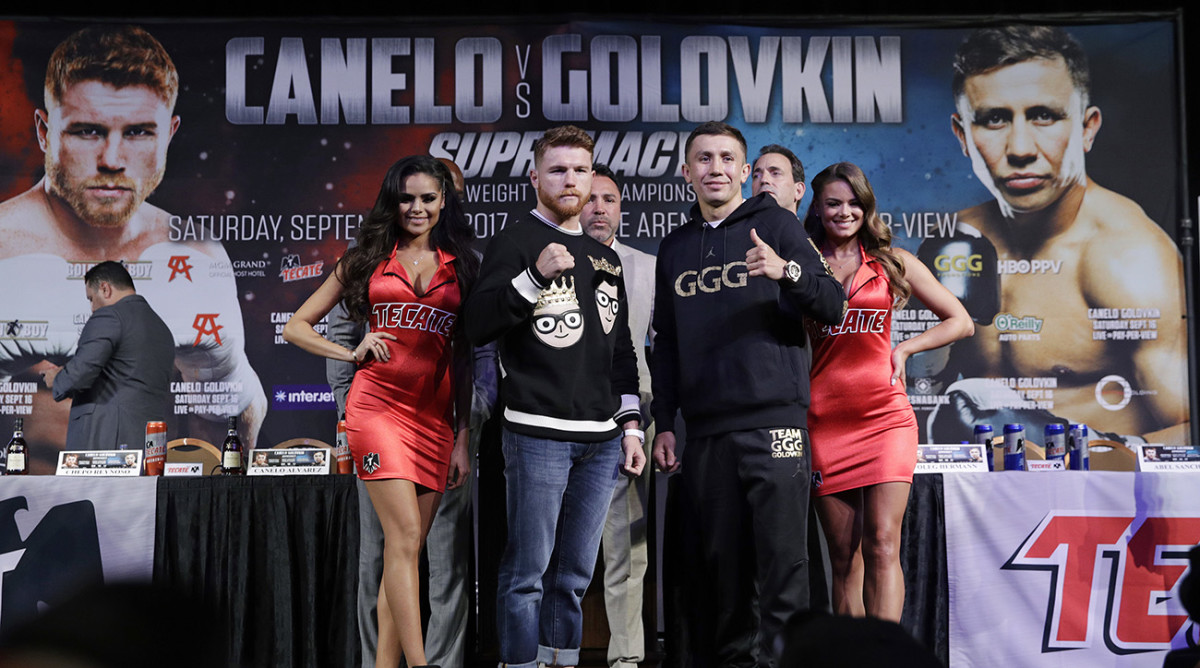Big-Time Boxing Has Become a Decadent Spectacle

Tabbing around the internet after a recent discussion with an editor, a discussion about whether boxing is or isn’t too violent and savage to have a place in mainstream American sports culture, I came across a paper published in the Journal of the American Medical Association by a Dr. H.S. Martland. Martland, a pathologist and medical examiner in Newark, had been studying the brains of boxers and their movement patterns. He noted that many fighters demonstrated peculiar neuromuscular symptoms after long careers in the ring.
He wrote, “There may be… a flopping of one foot or leg in walking… or a slight unsteadiness in gait. … Later on, in severe cases, there may develop a peculiar tilting of the head, a marked dragging of one or both legs, a staggering, propulsive gait, with the facial characteristics of the parkinsonian syndrome, or a backward swaying of the body, tremors, vertigo and deafness. Finally, marked mental deterioration may set in necessitating commitment to an asylum.”
Martland put forth an etiology of what he called “punch drunk:” “The occurrence of the symptoms in almost 50 percent of fighters who develop this condition in mild or severe form, if they keep at the game long enough, seems to be good evidence that some special brain injury due to their occupation exists.” His discovery is all the more stunning for having been made in 1928—before tetracycline, acetaminophen, the mumps vaccine. His paper predated Bennet Omalu’s CTE paper by 77 years. His findings were widely covered.
But what consequence did they have? Jack Dempsey aside, essentially the golden age of the entire sport elapsed after America’s leading journal of medicine identified its responsibility in causing enduring and irreparable harm to its athletes. There has for decades in America been a loud minority testifying against boxing, and that minority has achieved little.
Even these days, as football finds itself intermittently defending its existence because of the traumatic brain injuries its athletes receive, boxing is not so much assailed as it is permanently marginalized. At least I thought it was. But then along came Mayweather-McGregor. Last month’s spectacle grabbed the sports world and didn’t let go, no matter how crude, desperate, and middling (when it came to the fighting itself) things got.

***
I’ve been thinking a lot about decadence lately, for reasons having not all that much to do with sports (and perhaps something more to do with the billionaires running our government). It’s an underused term, especially given present circumstances. The word has been hijacked to advertise chocolate and not-quite-ice-cream and the like—in which usage decadence is a good thing—but it is meant to refer to decline and decay brought upon by the excessive pursuit of pleasure and indulgence. (The Roman empire was decadent; devil’s food cake is just caloric.)
Mayweather-McGregor, well, that was decadence, down to the alligator-skin WBC “Money Belt” replete with “3,360 diamonds, 600 sapphires, 160 emeralds and approximately 3.3 pounds of 24-karat gold” that Mayweather got for winning the fight. For one night’s wailing on an inferior competitor, America cut a serial domestic abuser a $300 million check and handed him that belt.
Showtime hasn’t yet released final numbers on how many people purchased the fight, but early estimates have Americans spending on the order of $400 million to watch it. Nearly five million people figured $89.95 ($99.95, for high definition) was a fair price to pay to watch whatever was going to happen. I don’t think all those people paid because they love boxing, exactly, because those who love boxing knew this wasn’t going to be much of a showcase for the sport.
Canelo Alvarez Stopping Traffic Amidst Preparation for GGG Clash
No, I think they paid because they wanted to be part of a grand, old-fashioned, big-tent American cultural event. There was nostalgia and romance in those pay-per-view purchases, a desire to tap into an era more appealing than the one in which we live—when boxing was big and beautiful and uncomplicated. What people did back then was watch the prizefights, so here we are on a Saturday night, watching the prizefight. (That’s also why, I figure, many of today’s most gifted sportswriters moonlight on the boxing beat: For decades, boxing was the subject of the nation’s best literary sports journalism.)
Mayweather-McGregor helped everyone time-travel, back to the days when Howard Hughes and Ava Gardner sat ringside at Yankee Stadium to watch Joe Louis fight, when an entire nation was rapt by its radios listening to Sam Taub. But you can go back to the 40s or the 30s and indeed to the late 20s in search of simpler times and a greater mass culture—and even then people knew boxing was uniquely dangerous. Nothing was ever solved. There’s another fight Saturday, Canelo Alvarez against Gennady Golovkin. It should be less of a circus, and more of a fight. But it’ll be no less barbaric than any of its predecessors.
When I think about decadence, I think about two men shortening each other’s futures for the amusement of the masses and for impossible riches. I think about a sports world too besotted with itself to change. We can do better.
